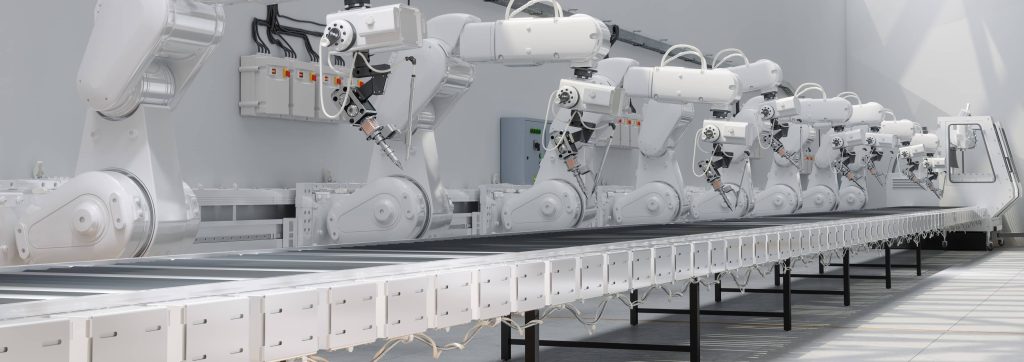
Chatbots are a hot topic. There are lots of articles that explain how to create a chatbot without coding. At the same time, in our article, we just recently explored the complexity of Natural Language Understanding (NLU) and how to deal with it. So, where is the truth? And how do you create the best chatbot for your needs? Let’s review the options from the simplest to the most complicated.
Menu-based chatbots
The simplest chatbots do not bother with processing the text typed by the user. Instead, a user can choose from a limited set of predefined “phrases” by pressing the appropriate phrase button. Landbot.io constructor is a good example of such an approach. Slash-command Slack bots also fall into this category.
These bots don’t require NLU and the complications it brings and, thus, are extremely easy to implement. In many cases, you don’t need to write even a single line of code. There are tools that allow creating of such a bot and designing the dialogue flows in visual editors.
Menu-based chatbots are successfully used by a lot of businesses, but they are not nearly as engaging as other types of bots. Still, for basic customer service with simple queries and predefined conversation flows, they provide the best value for the money. Also, they are a great option for a quick test of a market or idea along the lines of a lean approach.
Now, let’s step out of the comfort zone of controlled user behaviour into the realm of unrestricted free text input. And here comes…
Rule-based chatbots
The simplest thing you can do when processing the free text input is to detect keywords and phrase patterns and then to react based on them. Given the complexity and variability of natural language, this approach is very simplistic. Nevertheless, it is impressive how far you can get with it if you need a highly specialised bot for queries with limited and very specific vocabulary.
Rule-based chatbots rely on simple text processing tools (read: regular expressions) and thus can be up and running quickly without any knowledge of modern NLU science. Unfortunately, as the project expands with additional functions and a broader vocabulary, a bot becomes too complex to maintain and develop.
Poor scalability coupled with the inability to fully embrace the richness of natural language makes this approach the least recommended. But if you still want to try it, check out ChatScript.
Finally, we are entering the realm of true NLU. But this does not need to be too hard since you can create…
Chatbots based on NLU-as-a-Service
Everything is simpler with SaaS. And thanks to Clouds, we have a good selection of SaaS NLU providers. Not surprisingly, most the famous names come from FAMGA:
- Wit.AI by Facebook;
- LUIS by Microsoft;
- DialogFlow by Google;
- Lex by Amazon.
There are some promising startups in the field, too, Recast.AI and Craft.AI being just a few worth mentioning.
Most of these services provide APIs for intent classification. Here’s how they work. First, you define a model. The model basically contains a set of intents the user may express while chatting with the bot and some sample utterances the user may use for that (the more the better). Then, you let the service learn from this model. After that, the NLU-as-a-Service will be able to analyse the actual user input in real time and tell you to which intent it most likely corresponds. Unlike a rule-based bot, this service can recognise the intent even if the real user’s message is quite different from what the developers have provisioned.
The actual development process is somewhat more nuanced, and you better entrust it to the experts that understand the concepts behind it. But apart from this, everything is still straightforward, and the project kick-off is as fast as with the rule-based approach. At the same time, NLU-as-a-Service bots scale better as their functionality grows.
Chatbots of this type provide a middle ground between the cost of development and the potential of the bot. NLUaaS gives you good results in interpreting user goals from conversational queries, but that may still not be enough. If you need a universal mechanism for entities recognition, support for complex contexts, ability to nest dialogues, etc., you will want to go with…
Chatbots with custom NLU stack
If you need more flexibility in the way your NLU works, you have to build your own stack from the open-source, free, or purchased components. You can choose the Rasa Stack that is a drop-in replacement for the abovementioned intent classification services.
You will need to roll out your own infrastructure, but for this additional cost you will also get the ability to fine-tune the NLU pipeline to the exact domain you need to get better results. SaaS solutions cannot do that as they are created to work for a broad range of customers.
Or, you can drop the intent classification altogether and build your bot logic directly around the Name Entity Recognition process using, for example, NLP4J from Emory University or CoreNLP from Stanford—whatever works best for you.
The amazing things such bots can do won’t come for free. Projects of this type tend to take longer and require engineers with expertise in data science services. In general, such projects are more expensive compared to the SaaS approach.
But as a result, you get a more flexible system, NLU, that can become incrementally better, have higher product quality, and thus the ability to create a more advanced and engaging experience for your users.
So, if you are about quality, this is the way to go. But if you need to take the quality over the top or the problem you are solving is very specific, you will need to…
Build your NLU from scratch
To do this, you need to involve the experts in the NLU field. They will use the achievements of modern Data Science to create a custom, low-level solution for your problem. Naturally, creating your chatbot from scratch is the most expensive and time-consuming option. We will not go into great detail here as each case is individual, and there are no general guidelines. To get a glimpse of the level of tasks solved by this kind of project, we will once again refer you to our previous article.
Now, we will finish our bird’s-eye overview. As you can see, when it comes to creating the chatbot, there is a range of options from the simplest and budget-friendly to the most sophisticated and expensive.
Let us know if you have a choice to make, and we will smoothly lead you through the process.
Related Insights








The breadth of knowledge and understanding that ELEKS has within its walls allows us to leverage that expertise to make superior deliverables for our customers. When you work with ELEKS, you are working with the top 1% of the aptitude and engineering excellence of the whole country.

Right from the start, we really liked ELEKS’ commitment and engagement. They came to us with their best people to try to understand our context, our business idea, and developed the first prototype with us. They were very professional and very customer oriented. I think, without ELEKS it probably would not have been possible to have such a successful product in such a short period of time.

ELEKS has been involved in the development of a number of our consumer-facing websites and mobile applications that allow our customers to easily track their shipments, get the information they need as well as stay in touch with us. We’ve appreciated the level of ELEKS’ expertise, responsiveness and attention to details.
